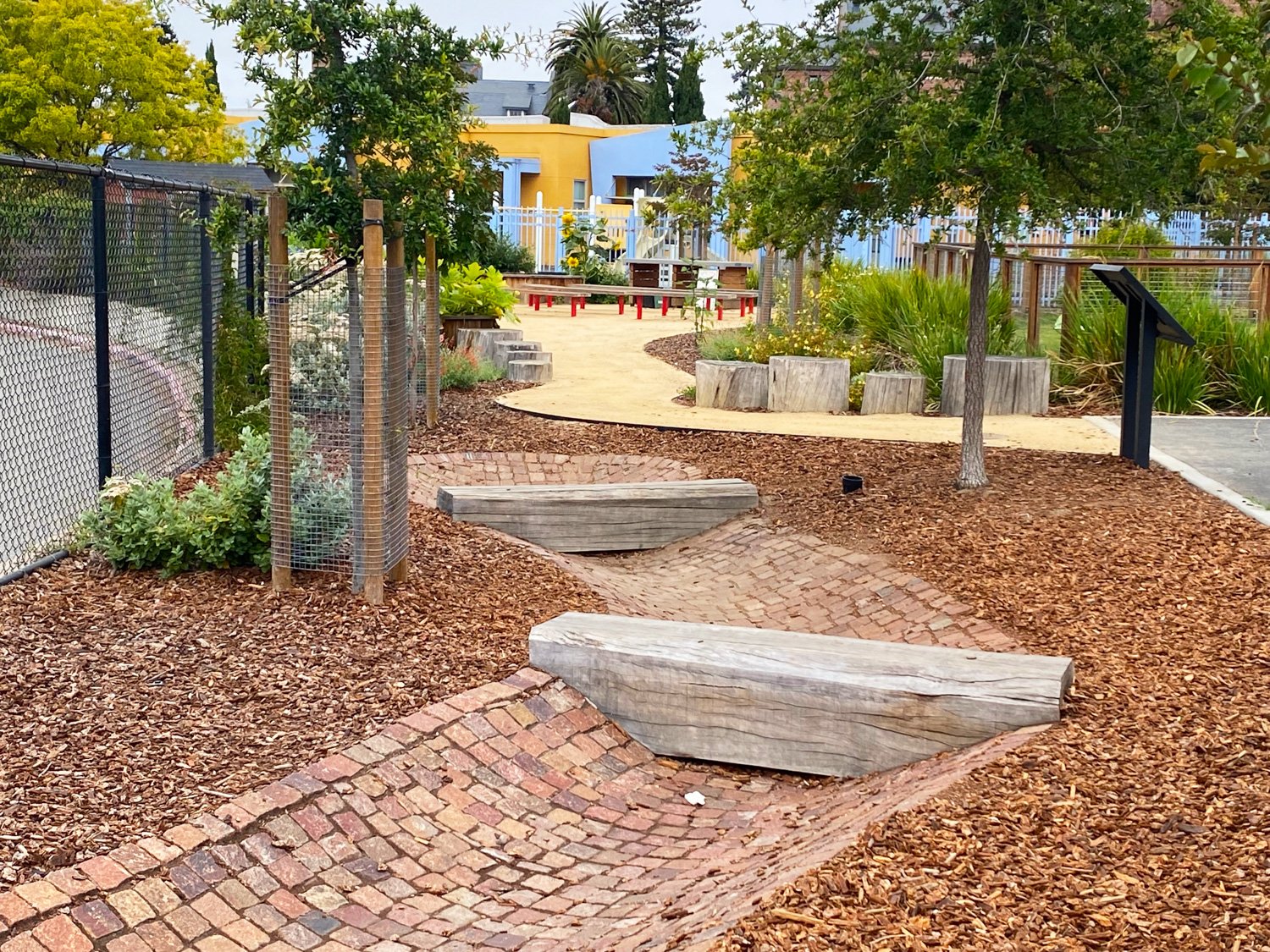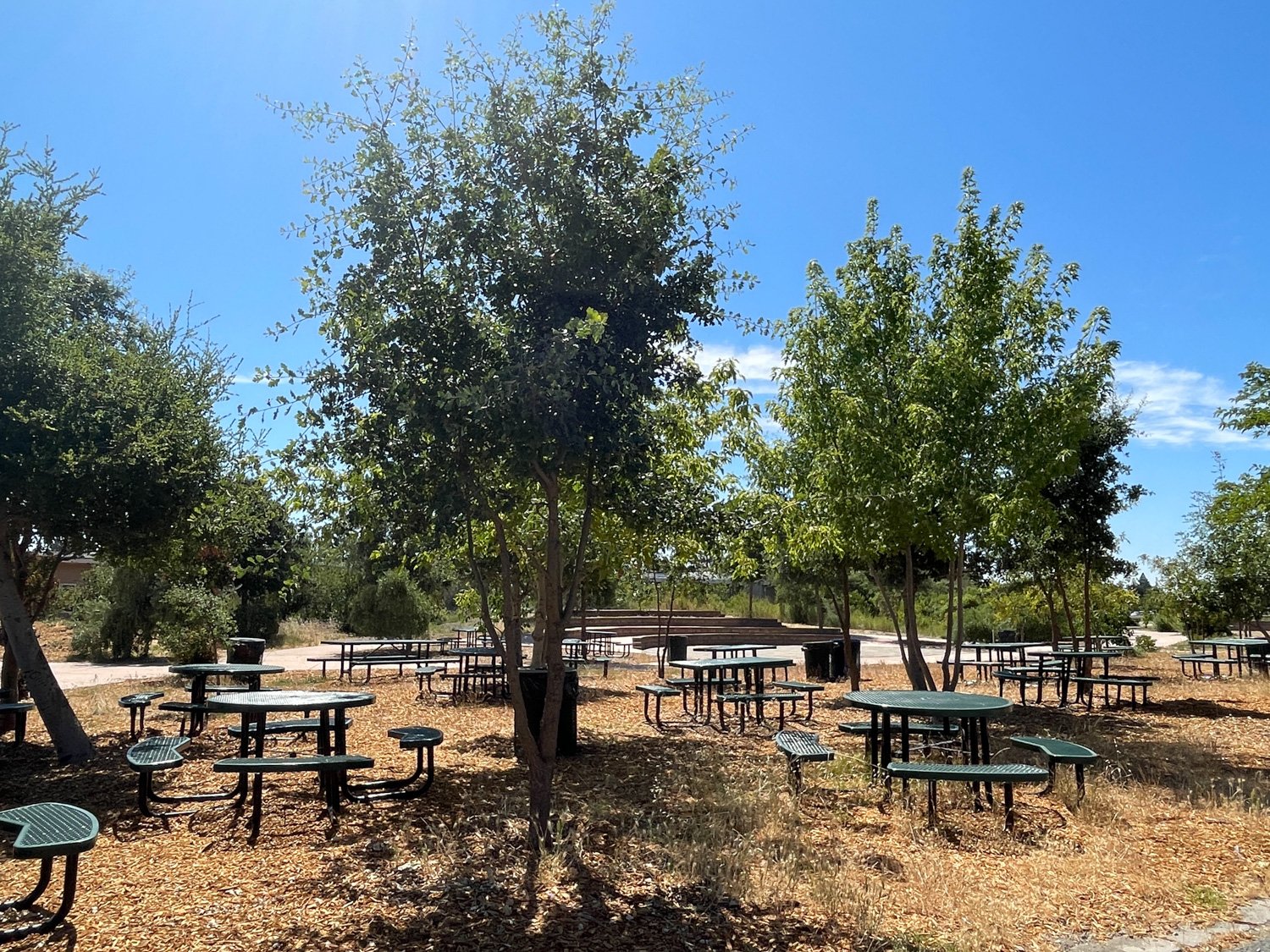Making the Case for Schoolyard Forests
Introduction
Every day, millions of pre-K-12 students attend public schools on more than 2 million acres of public land. Acres of unshaded asphalt cover too many of our school grounds, affecting the wellbeing of students, their communities, and the environment.
The climate crisis impacts children’s health and wellbeing. Schools across the country and around the world need to adapt their grounds to respond to climate change and protect vulnerable children and youth from extreme heat.
Equitable, child-accessible tree canopy is essential. Trees on schoolyards have been demonstrated to shade and protect pre-K-12 students from extreme heat, but the lack of shade is particularly urgent in places that currently have the fewest trees, the hottest present and future climates, and in low-income communities. We call this “tree canopy equity.”
Surface Temperature Studies
Over the last five years, Green Schoolyards America has conducted research to understand the scope of the problem of rising temperatures on school grounds across the state. We have been taking measurements of school ground surface temperatures to document how the choices we make in selecting building and planting materials impacts microclimates and contributes to urban heat island effect. Our findings show that materials choices matter. It is important to avoid materials that increase heat and select cool materials when designing, building, or renovating school grounds.
For example, on sunny days at just 90 degrees F, unshaded asphalt can reach hazardous temperatures of 140 degrees or more, while rubber surfaces can reach more than 165 degrees. Even on a mild 65-degree day, asphalt may reach 120 degrees and rubber 155 degrees or more. In the example schoolyard to the left, our findings are similar.
Tree Canopy Equity
In partnership with GreenInfo Network, we have created a dynamic GIS map of K-12 public schools across California to use as a baseline to measure schoolyard tree canopy equity and as a tool to inform future policy priorities. The map includes sub-parcel level information including percent tree canopy cover in areas accessible to children and is accompanied by policy recommendations.
BENEFITS OF SCHOOLYARD FORESTS
The benefits of schoolyard forests for students and school communities are numerous. Here, we provide a comprehensive review of the health, learning, ecological, and community benefits of these spaces, and we provide links to the associated research. At a glance, benefits include:
Health and wellness benefits such as protection against heat, increased physical activity, social-emotional wellness, and improved mental health.
Learning benefits such as hands-on curriculum, environmental literacy, increased attention span, and improved academic performance.
Ecological and climate resilience benefits such as reduced heat island effect, carbon capture, decreased energy consumption/cooling needs, and improved stormwater management.
Community benefits such as family engagement, community cohesion, and increased stewardship.
Academic Benefits of Forests
A schoolyard forest system can provide an immersive and engaging learning environment that can help students learn and apply content standards in various subjects. The National Framework and California Framework resources below provide examples of how a schoolyard forest system can be an outstanding resource in implementing the instructional goals outlined in content frameworks in Science, Mathematics, English Language Arts, Social Studies, Career Technical Education, Arts, and Health.
The Standards Matrix resource accompanies the lessons and activities linked in the Educator Resources for Schoolyard Forests and demonstrates alignment to the Next Generation Science Standards and the Common Core in Mathematics and English Language Arts.
analyzing Barriers and opportunities
Over the last few years, Green Schoolyards America conducted interviews with California school districts, public agencies, and tree planting organizations to better understand what is needed to take schoolyard forests to scale across the state efficiently, effectively, and equitably. We also reviewed state and local policies that affect schoolyard greening and trees. The documents below summarize our findings and report on existing challenges that impede implementation as well as opportunities that could be harnessed to improve green schoolyard and schoolyard forest policy and practice at local and state levels in the future.
Video Testimony
We invite you to watch the recording (linked at left) of our hour-long webinar to launch the California Schoolyard Forest System℠ to learn more about the initiative and the need for schoolyard forests.
In addition, our Community of Practice for Schoolyard Forests has conducted several online meetings that include testimony and engaging presentations from school district colleagues, invited guest speakers, and technical experts who share their work on schoolyard forests. You can find these videos here.
Schoolyard Forest System℠
The Schoolyard Forest System℠ Resource Library is a set of practical tools for schools and districts working to increase tree canopy on public school grounds to shade and protect PreK-12 students from extreme heat and rising temperatures due to climate change. Funding for the first phase of this initiative was provided by a grant administered by the California Department of Forestry and Fire Protection (CAL FIRE) Urban and Community Forestry Program, and private philanthropy.









